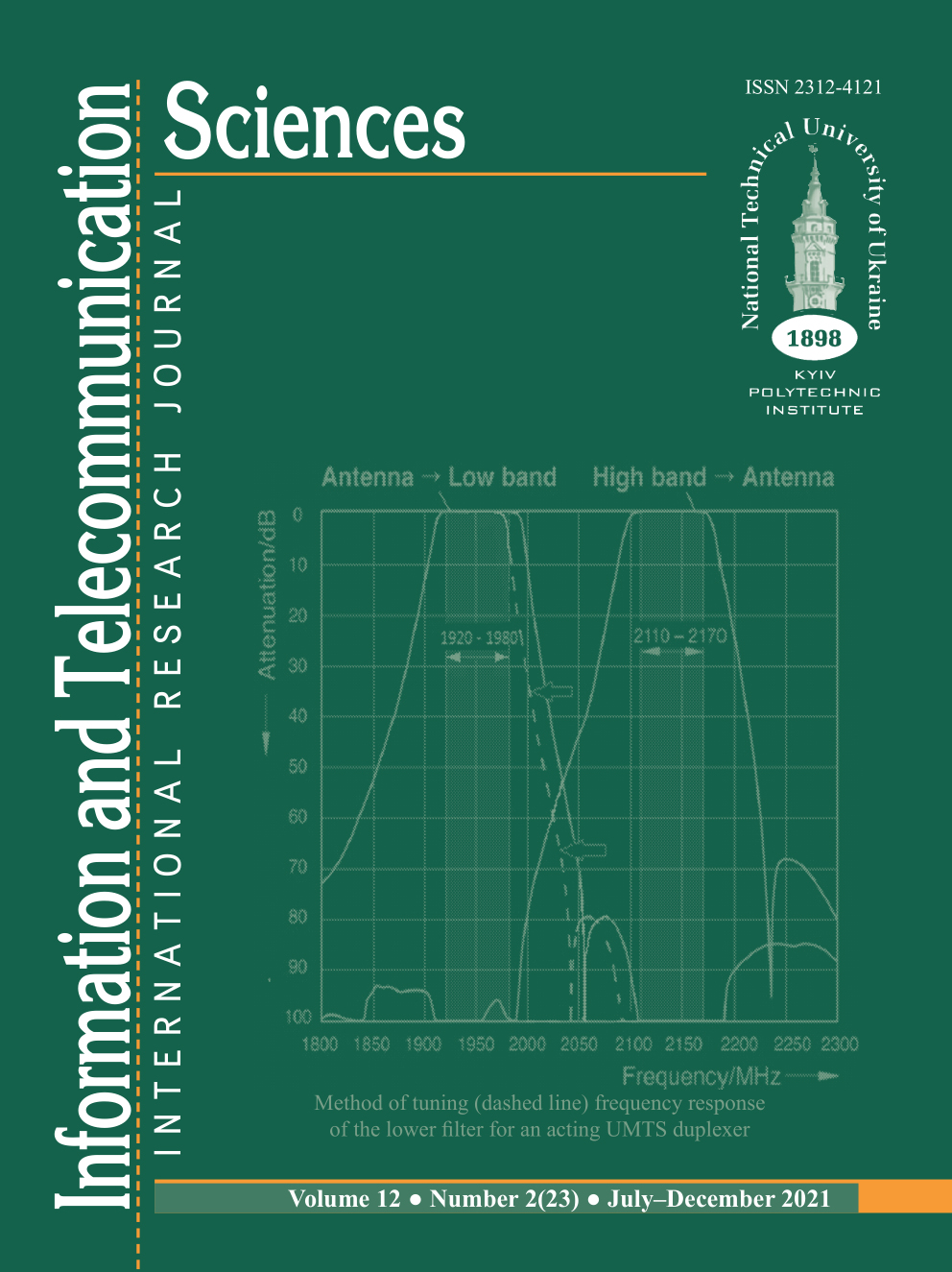THROUGHPUT INCREASE IN THE OFFICE LI-FI SYSTEM
DOI:
https://doi.org/10.20535/2411-2976.22021.16-21Keywords:
Light-Fidelity (Li-Fi), throughput, feedback, refresh interval, VLCAbstract
Background. Wi-Fi has many disadvantages, such as how the maximum bandwidth is limited by the frequency of the range. The work uses Li-Fi technology, which uses visible light for data transmission. The frequency range of Li-Fi is 1000 times greater than the entire radio range. Feedback is used to increase the throughput. But the feedback decreases the bandwidth of the downstream signal.
Objective. The purpose of the paper is to analyse what parameters are advisable to change to increase the throughput of the Li-Fi system.
Methods. Study of the simulated dependence of the optimal interval change for using the feedback, and using this interval plot the dependence of the throughput on the change in the parameters of the Li-Fi system with a mobile user.
Results. With an increase in the area of the photodiode and its refractive index, the throughput increases. As the receiver speed increases, the throughput decreases slightly <0.1%. Reducing the angle of the photodiode field of view and the half-angle of radiation significantly increases the throughput (by 50%) only when decreasing to small angles (<10 °).
Conclusions. It is advisable to make photodiode from a material with a high refractive index, with a big area. Since mobile devices are often used in the office Li-Fi network, it is not advisable to reduce the receiver's viewing angle, as well as to reduce the half-angle of radiation. It may also be beneficial to give mobile users more download throughput than upload throughput.
References
Cisco Visual Networking Index: Global Mobile Data Traffic Forecast Update, 2016–2021 White Paper.
D.Tsonev, S.Videv, and H.Haas, “Towards a 100Gb/s visible light wireless access network”, Optics Express, vol.23, no.2, pp.1627-1637, Jan.2015.
Oleksandr Romanov, Tho Dong and Mikola Nesterenko. The Possibilities for Deployment Eco-Friendly Indoor Wireless Networks Based on LiFi Technology/ 8th International Conference on Applied Innovations in IT, (ICAIIT), March 2020.
CELMA, Optical safety of LED lighting
Pingree T.L., Dangers of Overexposure to ultraviolet, infrared and high-energy visible light
HranilovicS. and KschischangF.R., Optical Intensity-Modulated Direct Detection Channels: Signal Space and Lattice Codes, Information Theory, IEEE Transactions Volume 49 Issue 6, pp. 1385 -1399, 28 5 2003.
Romanov O.I., Fediushyna D.M., Dong T.T. Model and method of Li-Fi network calculation with multipath light signals / 2018 International Conference on Information and Telecommunication Technologies and Radio Electronics, UkrMiCo 2018, 9047550/DOI: 10.1109/UkrMiCo 43733.2018.
Li Beam: Throughput-Optimal Cooperative Beamforming for Indoor Visible Light Networks
O.I. Romanov, Y. S. Hordashnyk, and T. T. Dong, “Method for calculating the energy loss of a light signal in a telecommunication Li-Fi system”, International Conference on Information and Telecommunication Technologies and Radio Electronics (UkrMiCo), IEEE Conference Publications, pp.: 1-7, 2017;
On Throughput Maximization Based on Optimal Update Interval in LiFi Networks; Mohammad Dehghani Soltani, Majid Safari, and Harald Haas, LiFi R&D Center, Institute for Digital Communications, University of Edinburgh, Edinburgh, EH9 3JL, UK.
Downloads
Published
How to Cite
Issue
Section
License

This work is licensed under a Creative Commons Attribution 4.0 International License.
The ownership of copyright remains with the Authors.
Authors may use their own material in other publications provided that the Journal is acknowledged as the original place of publication and National Technical University of Ukraine “Igor Sikorsky Kyiv Polytechnic Institute” as the Publisher.
ITS articles are published under Creative Commons licence:
- Authors retain copyright and grant the journal right of first publication with the work simultaneously licensed under CC BY 4.0that allows others to share the work with an acknowledgement of the work's authorship and initial publication in this journal.
- Authors are able to enter into separate, additional contractual arrangements for the non-exclusive distribution of the journal's published version of the work (e.g., post it to an institutional repository or publish it in a book), with an acknowledgement of its initial publication in this journal.
- Authors are permitted and encouraged to post their work online (e.g., in institutional repositories or on their website) prior to and during the submission process, as it can lead to productive exchanges, as well as earlier and greater citation of published work.

